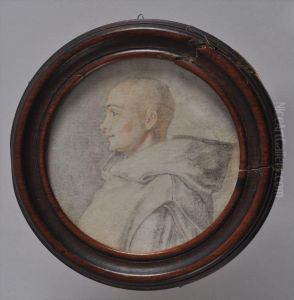Guiseppe Cesari Paintings
Giuseppe Cesari, also known as the Cavaliere d'Arpino or simply Il Giuseppe, was an influential Italian Mannerist painter during the late 16th and early 17th centuries. Born in 1568 in Arpino, a town in the region of Lazio, he moved to Rome at an early age, where he would establish his career and spend most of his life.
Cesari's early work was influenced by the Roman Mannerist painters, such as his mentor Niccolò Circignani, known as Pomarancio, and the works of the Zuccari brothers. His style was characterized by an elegant use of line and a refined approach to color and composition. He soon gained the patronage of important figures in Rome, including the powerful Cardinal del Monte, who was also an early patron of Caravaggio.
In Rome, Cesari quickly rose to prominence. He was one of the first artists to be knighted by Pope Clement VIII, which earned him the title 'Cavaliere.' His fame was such that he was given significant commissions, including works in the Vatican, such as the frescoes in the Sala Clementina. Cesari was also involved in the decoration of the Lateran Palace and the Palazzo dei Conservatori on the Capitoline Hill.
Despite the rise of the Baroque style and artists like Caravaggio, who challenged the Mannerist aesthetic with a more naturalistic approach, Cesari maintained his status and continued to receive important commissions. His workshop was one of the largest in Rome and trained many young artists, including the young Caravaggio who briefly worked for him. This demonstrates the central role Cesari played in the Roman art scene of his time.
Cesari's work was characterized by a gracefulness and a preference for elongated figures and ethereal scenes, often with an emphasis on decorative elements. He was an accomplished draughtsman and his drawings were highly prized by collectors during his lifetime.
Cesari's influence waned later in his career as the Baroque style became dominant. He died in Rome in 1640, leaving behind a body of work that had a significant impact on the development of late Mannerism in Italy. Though his reputation was somewhat overshadowed by the Baroque masters who followed, his contributions to the art of his time are still recognized by art historians today.
